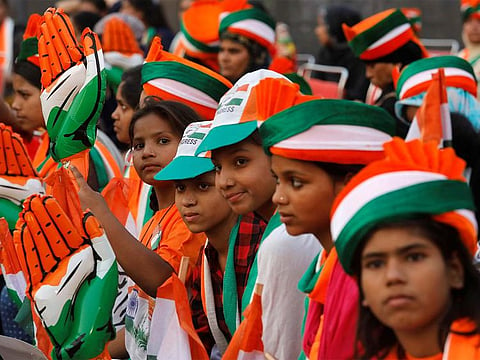India elections: How will the votes across the country be counted in one day?
The use of EVMs means the count itself on Thursday should be simple enough

NEW DELHI: India’s enormous election took six weeks to hold, but organisers have allotted just one day to count all the ballots cast by some of the 900 million eligible voters.
The use of electronic voting machines means the count itself, set for Thursday, should be simple enough.
But with claims of fraud already surfacing in some quarters, it could equally be a laborious affair that could delay the announcement of the final result.
More than 67 per cent of the electorate turned out to use the machines during seven rounds of voting.
Here is how their votes will be counted:
Guarded strongrooms
Armed police stand outside the strongrooms where the voting machines are kept to ensure no one touches them until the count starts.
Representatives of competing political parties can join the guards in the 24-hour vigil or watch a CCTV feed from cameras monitoring the area.
Representatives of the candidates can also inspect the machines when they are taken to the counting room where each is put on a table.
Sudeep Jain, a deputy election commissioner with the national poll body, said an official then presses a button to get a readout of the votes cast for each candidate.
One round of counting including tabulation takes between 20 and 25 minutes, he said.
The count is not final until all candidates, or their representatives, and electoral delegates are satisfied with the accuracy of the results.
Jain said the tally from machines around the country is expected to be ready in about eight hours.
Paper trails
India is using a system where the electronic machine results are checked against paper tickets given out with each vote.
India’s Supreme Court ordered officials to randomly match paper ballots against the machine results at 20,600 out of the total 1.3 million polling stations.
Jain said candidates could also demand a check if there were doubts about a machine result.
The checks could delay the announcement of the final result by several hours, he added.
Every counting table must have a blue ballpoint pen and a paper knife to break open the seals on the electronic voting machines.
Teams are also on hand to seal the machines with wax and a safety tag with a serial number as soon as the count is completed to ensure their integrity if a result is contested.
No memory loss
Postal ballot papers are counted first. India’s rules allow security and other officials on election duty to cast their votes by post or electronically.
The counting of electronic votes will begin 30 minutes after the postal ballot count is finished.
Candidates have 45 days to contest a result.
If a court orders a recount, a machine’s memory can be reactivated by reconnecting the battery so it displays the result stored in its memory.
When the final result sheet is ready, a returning officer in each constituency must pause for two minutes during which a candidate or his agent can ask for a recount.
The officer can reject any request that is considered unreasonable or frivolous. When disputes are resolved, the result is announced and the candidate’s agents sign the final document to be reported to the election commission.
Sign up for the Daily Briefing
Get the latest news and updates straight to your inbox





